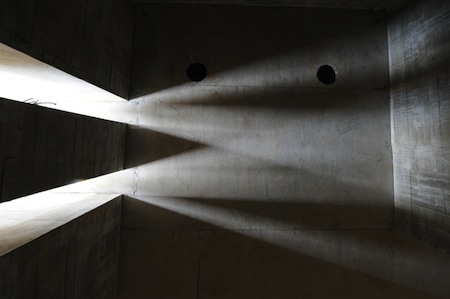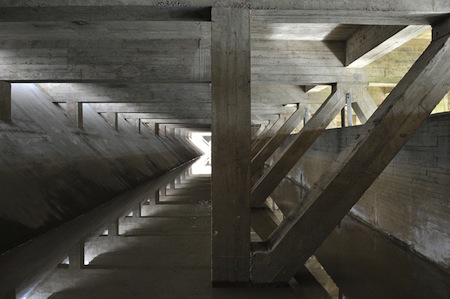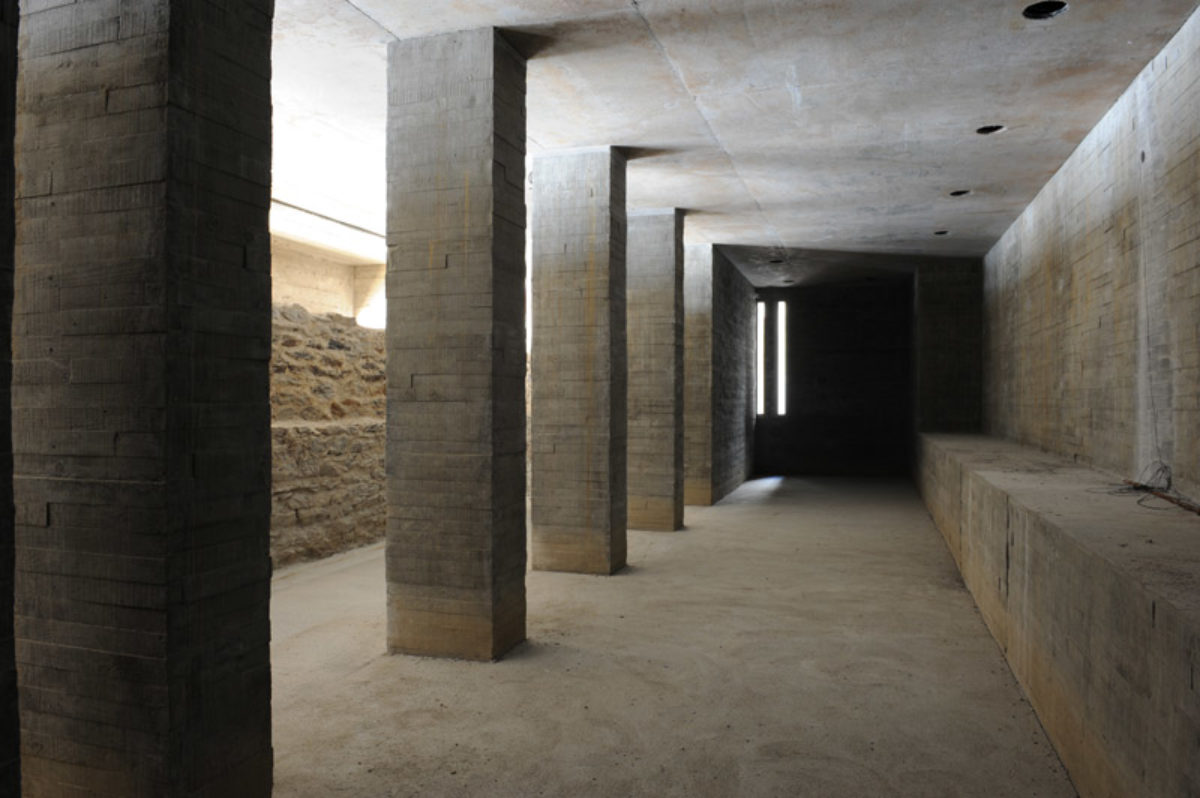Professor in Residence in Art, Design, and the Public Domain Krzysztof Wodiczko, in collaboration with architect Julian Bonder (MDesS ’96), has recently completed construction of the Memorial to the Abolition of Slavery in the former epicenter of the French slave trade, Nantes. The memorial was created as a site of remembrance of slavery as a crime against humanity, and to commemorate all past and present efforts of resistance to enslavement.
According to Wodiczko and Bonder, the Memorial is also a project to reclaim the banks of the Loire. Sited in a location symbolic of Nantes’ port activities, it redirects traffic routes to place memory at the heart of the city. “The transformation of a space which is currently ‘empty’ into a ‘passageway’ provides a link with the ground under the city of Nantes, on both sides, land and sea… In some places [visitors] will find themselves hemmed in by 20th century substructures, a feeling reminiscent of the extreme confinement experienced aboard the slave ships,” explains the artist-architect duo.
 An enormous open-air staircase leads to the subterranean passageway where visitors are welcomed by the Universal Declaration of Human Rights, behind which the word ‘freedom’ is displayed in over fifty languages from countries on every continent affected by the slave trade. At the western end of the passageway, key historical dates and locations highlight the scale not only of the events that led to the abolition of the slave trade, but of the ongoing fight against enslavement today.
An enormous open-air staircase leads to the subterranean passageway where visitors are welcomed by the Universal Declaration of Human Rights, behind which the word ‘freedom’ is displayed in over fifty languages from countries on every continent affected by the slave trade. At the western end of the passageway, key historical dates and locations highlight the scale not only of the events that led to the abolition of the slave trade, but of the ongoing fight against enslavement today.
Since the 1990s, the people of Nantes, along with the town council, have actively sought to face their unpleasant history. “Taking responsibility for such a past, without feelings of repentance, allows us to carry on our struggles with our eyes wide open,” says Jean-Marc Ayrault, Deputy and Mayor of Nantes. “[The Memorial] is not another act of contrition, but a genuine call to us all to remember past struggles in order to project ourselves into the future, fighting against all modern forms of slavery and denial of human rights in order to build a more united world.”
The Memorial to the Abolition of Slavery is the largest slave trade memorial in the world. Attendees at the opening ceremony on March 25 hailed from around the globe, echoing one of the Monument’s primary aims: ”to provide an anchor point and a context for the construction of a collective conscience rejecting all forms of enslavement and affirming the richness and diversity of the human race.”
 Artist Krzysztof Wodiczko works primarily in large-scale projections and urban interventions to emphasize issues concerning human rights, democracy, violence, and alienation. His early design education and successful collaborations with architects have informed his career as an artist and educator. His current option studio, Un-War Architecture, focuses on the power of artists and designers to “dis-arm” war memorials.
Artist Krzysztof Wodiczko works primarily in large-scale projections and urban interventions to emphasize issues concerning human rights, democracy, violence, and alienation. His early design education and successful collaborations with architects have informed his career as an artist and educator. His current option studio, Un-War Architecture, focuses on the power of artists and designers to “dis-arm” war memorials.
Architect and GSD alumnus Julian Bonder grew up in New York and Buenos Aires and has held teaching positions around the world. He has won numerous awards from the Boston Society of Architects for Housing Design and Small Projects in addition to his extensive work on memorials. He is currently Professor of Architecture at Roger Williams University.
Wodiczko+Bonder have collaborated on several projects dealing with public space, memory and trauma.
The Memorial to the Abolition of Slavery received Special Mention 2012 for the European Prize for Urban Public Space.
For more information, visit the Memorial to the Abolition of Slavery website.
